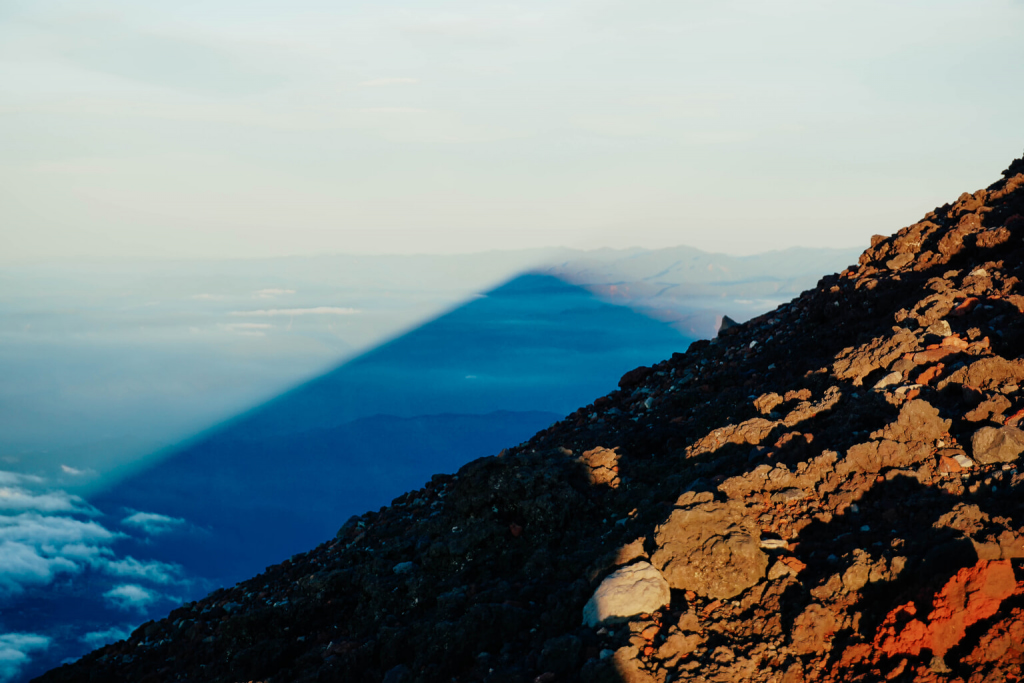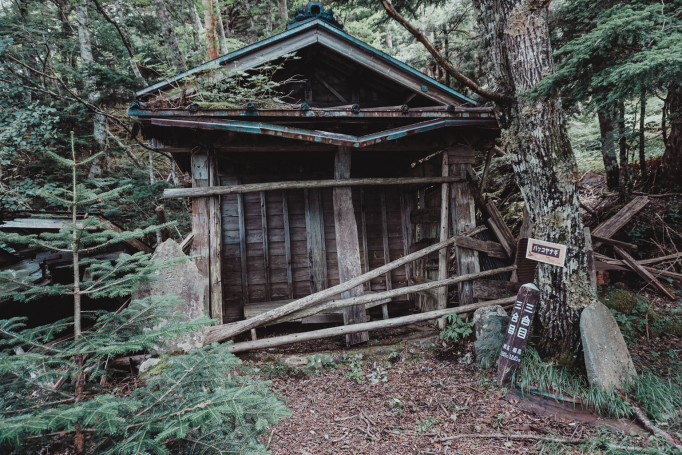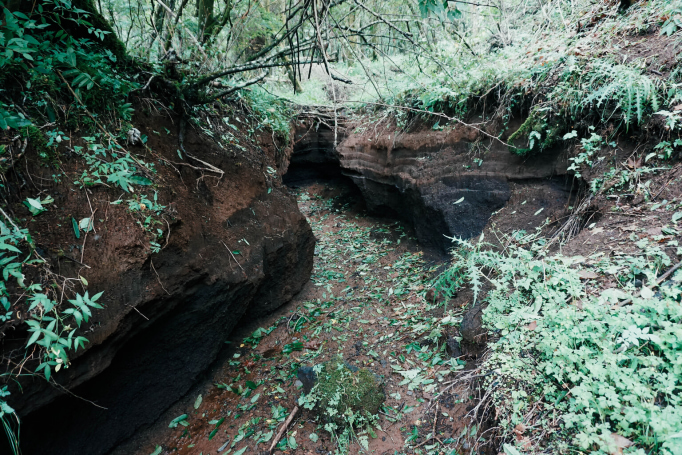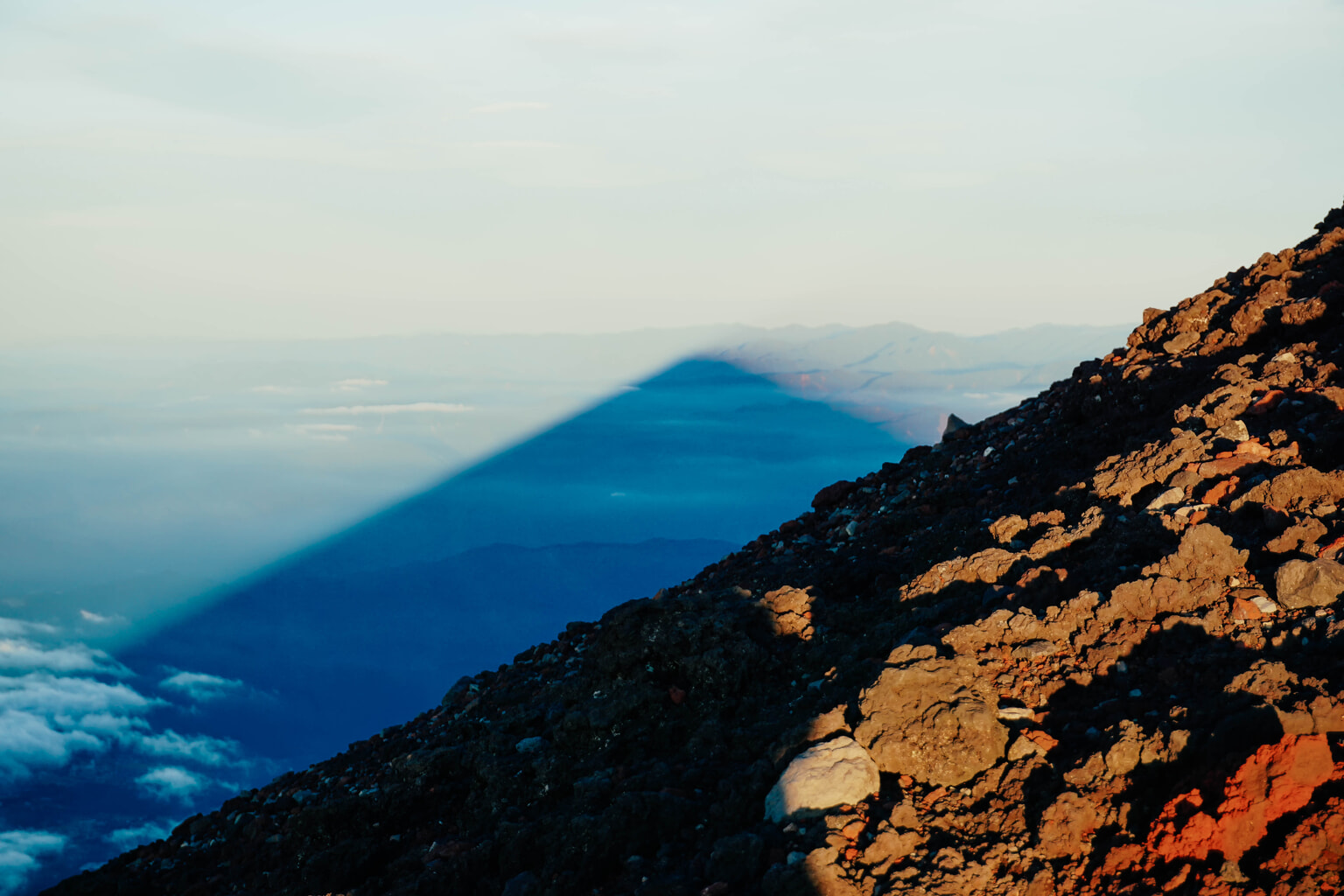If they are lucky and the weather is clear, passengers aboard the Tokaido Shinkansen Line from Tokyo to Nagoya will be able to catch a panoramic view of Mount Fuji out the right-side windows of the train as they zip along the tracks down the coast of Japan. I was one such passenger. I enjoyed some snacks and an Asahi Super-Dry, which somehow tastes much better at 300kph while gazing out at Japan’s tallest mountain.
As I watched the scenery of Shizuoka’s coastal towns whoosh by with Mount Fuji towering behind them, I thought “surely someone has dipped their boots in the ocean and climbed all of Mount Fuji, haven’t they?” A quick Google search led me to find that yes, many people have. And there is even a dedicated course promoted by the city of Fuji.
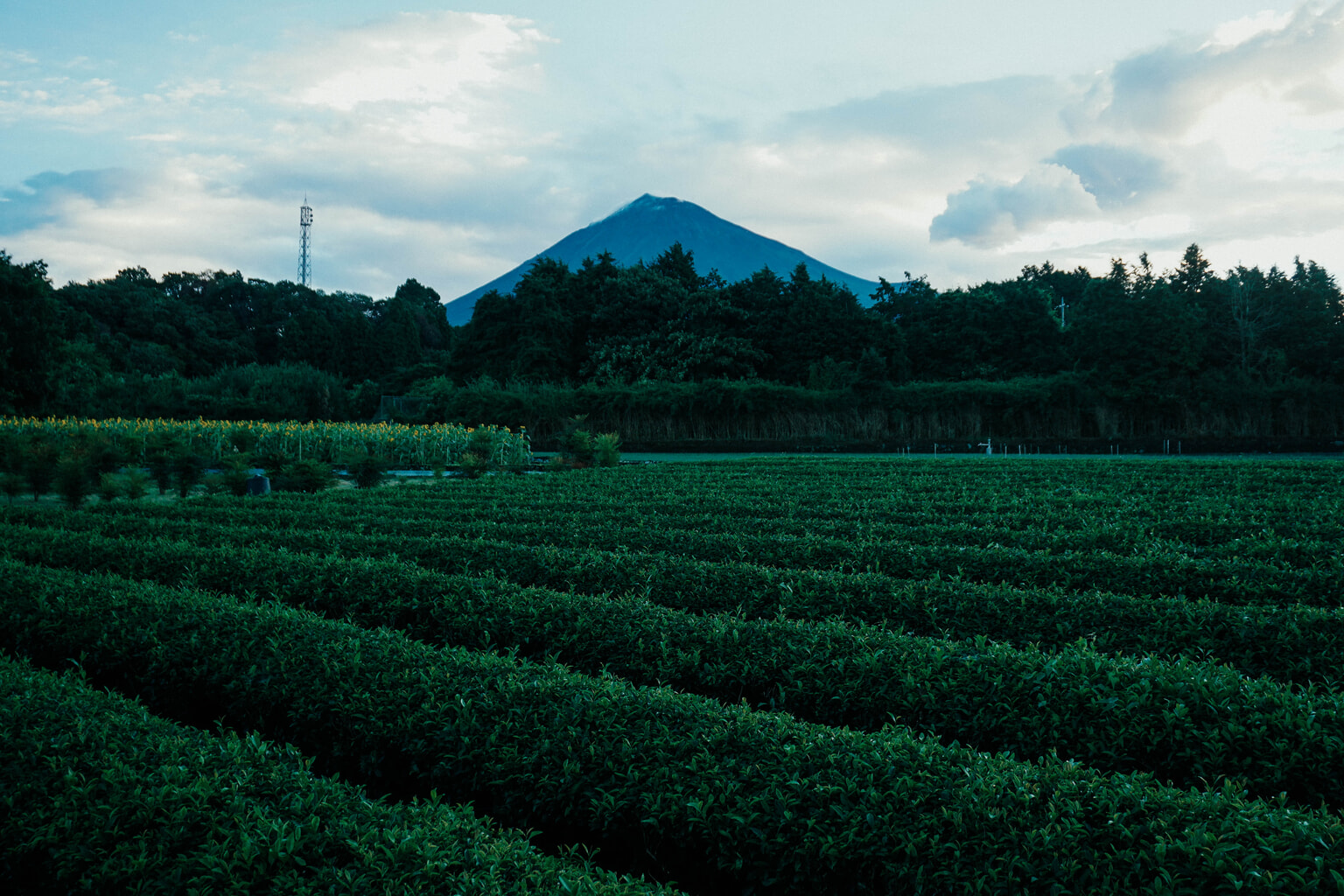
As is the case for most foreigners in Japan, climbing Mount Fuji was one of those things on my bucket list. I’ve climbed many mountains in the Kanto area, including Mount Kumotori, which at 2,017m is Tokyo’s tallest mountain. So, climbing Mount Fuji from the fifth station, a common starting point, didn’t seem like too insurmountable a challenge. That being said, climbing Mount Fuji from sea level to the summit seemed like something I could easily fail at.
Planning the Climb
After looking at the Fuji City guide and some videos of other hikers making the journey, I asked my partner if she was interested in giving it a go. We decided to try it. It would be an adventure and an opportunity to cross climbing Mount Fuji off our bucket list.
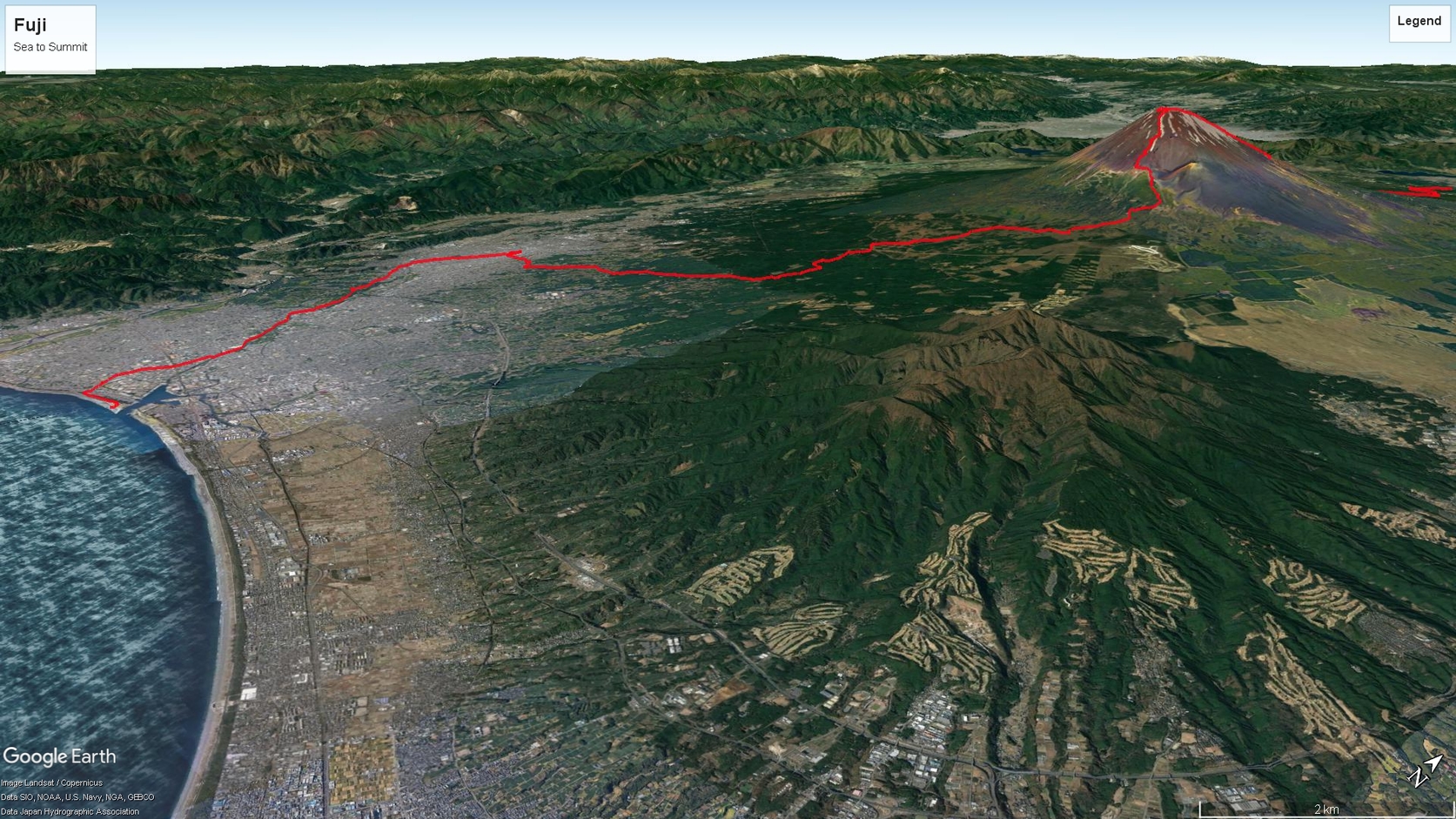
First, we had to decide how long it would take and what route we should follow. We knew we would be starting at the coast near Shin-Fuji station, but that was about it. We decided to chart out a rough journey with GPS and found that it would be roughly 70km. Three days would suffice for that. The route would lead us up the Fujinomiya Trail and down the Yoshida Trail towards Kawaguchiko on the opposite side.
We booked accommodations, bought a couple of necessary items, went on a few long practice hikes and prayed that we would get good weather when we made our attempt a few months later, in August.
Day 1: Departure Day
Our departure date rolled around, so we got on the lovely Odakyu Romancecar and headed for Shin-Fuji station. There, we got in a taxi and made our way towards the ocean. We knew there was a typhoon off the coast of Japan, but we were ecstatic to see blue skies greet us above the giant tetrapod seawall. Unfortunately, Mount Fuji was hiding behind the clouds, as is so often the case in summer.
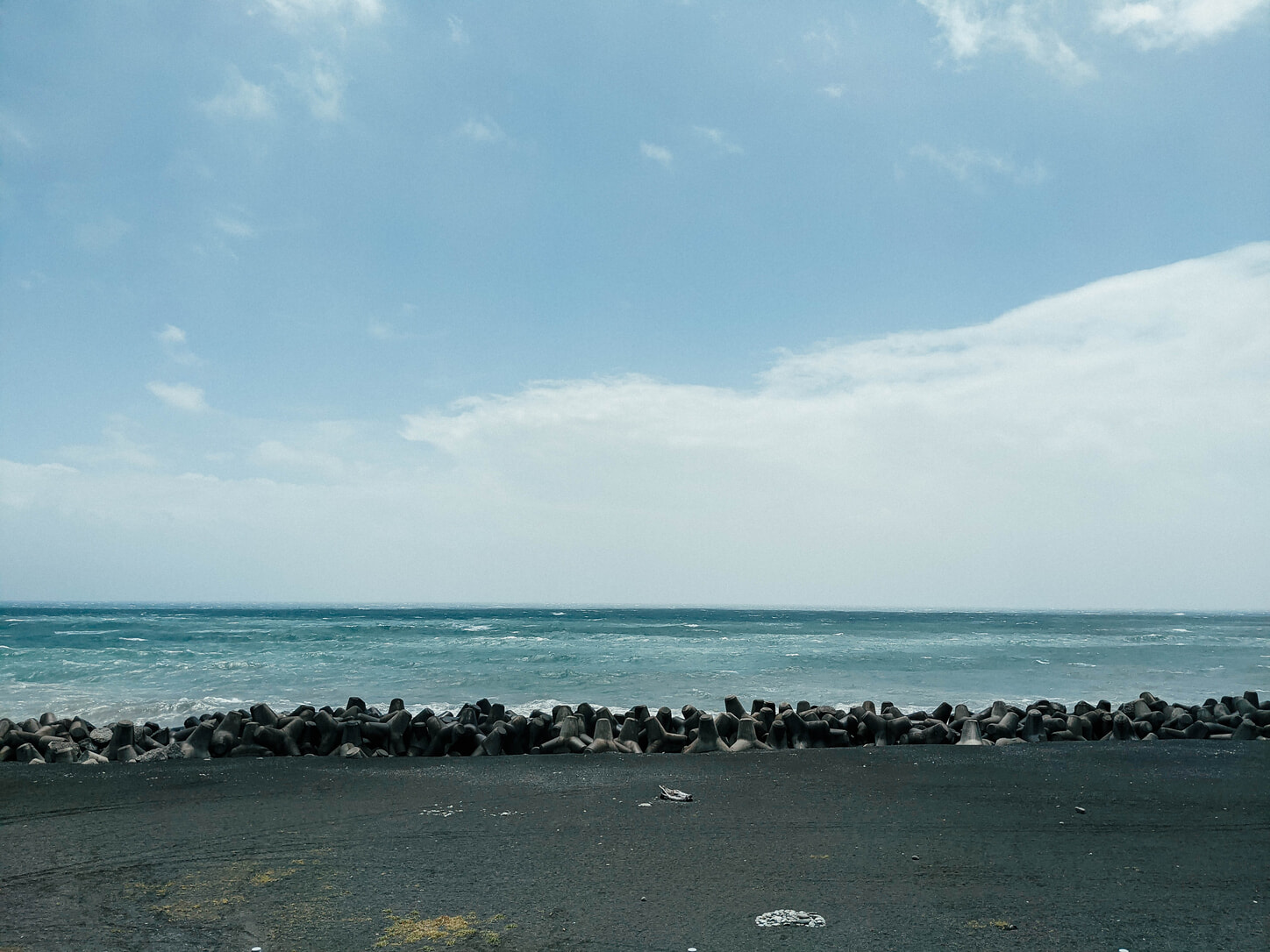
We climbed down to the sea and clambered through the tetrapods to fill our bottles with seawater. It’s said to be a tradition for hikers to bring seawater to Japan’s highest point and let it flow back down to where it came from. Within about 10 minutes of gathering our seawater, the hiking gods decided to give us a thorough rinse by bringing in the typhoon rains.
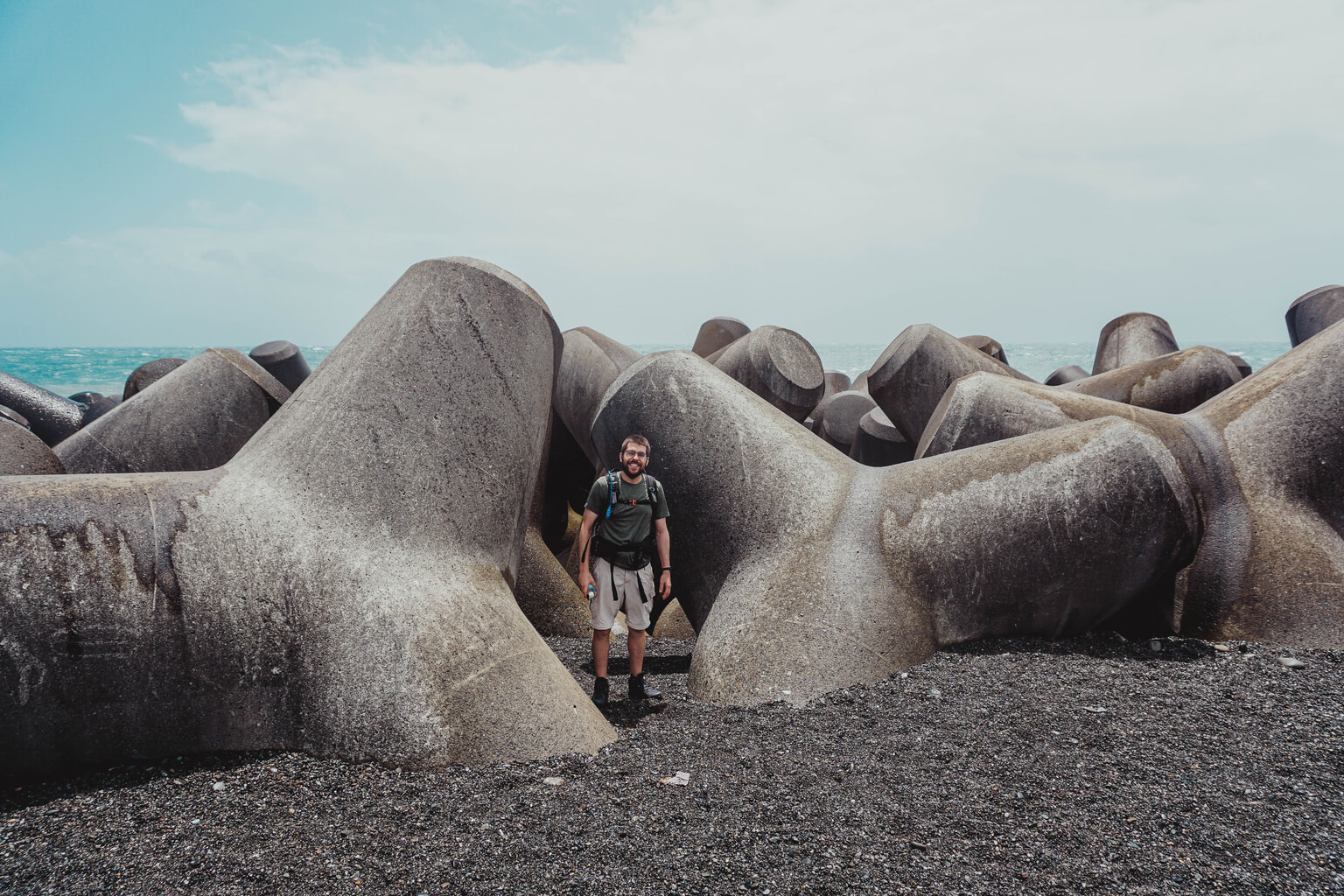
Our first day was a 17km trek through the city to our first goal of reaching Hana No Yu onsen and hotel. The first two hours of the hike we experienced torrential rain. Luckily, the sky cleared up, we drained our boots and wrung out our socks and continued on. Twenty minutes later, the skies brought on another downpour that lasted the entirety of the 17km, four-and-a-half-hour journey. At the hotel, we got our money’s worth out of the onsen and free massage chairs. We ate, dried off and went to sleep early. There was a difficult day ahead of us.
Day 2: Climbing to the Sixth Station
Day two was going to be tough. We had to climb 2,300m in height across a distance of 25km to the sixth station. So, we woke up at 3am to get a good early start. We ate breakfast at Lawson and hiked for about an hour until the last convenience store where we stocked up on extra water and lightweight calorie-dense food. As the sun began to rise, we got our first look at Mount Fuji peaking above the tea fields that Shizuoka is so famous for. It looked impossibly far away. We walked along the paved roads until we found the forest path I had marked on our GPS.
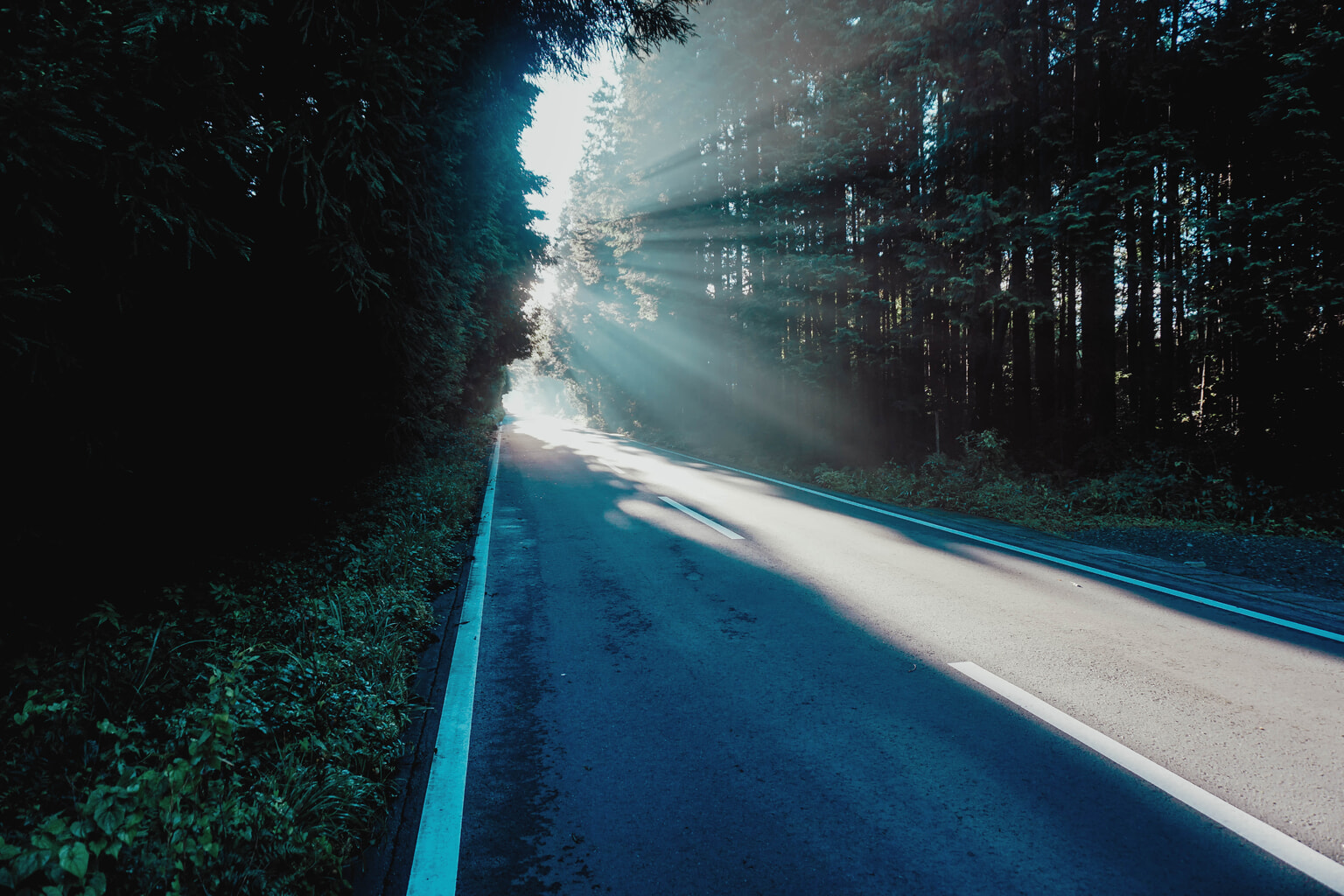
Instead of following the lovely and safe route suggested by the city, I charted out my own, much shorter, faster route by using satellite images and detailed data from several GPS route providers. My hubris was not rewarded. The first stretch of this off-the-beaten-path trail was great, the soft earth under our feet was a welcome change from the punishing asphalt roads. The forest was beautiful and the warm sun was creating a nice steamy ambiance in the trees. We passed a few bubbling streams and other landmarks and we knew we were well on our way.
This is What Straying from the Route Gets You
It wasn’t long before the path became less a path and more of a two-meter-deep trench carved out by years of typhoon rain and filled with treacherous logs and other hazards. This resulted in us trudging through tall grass, thorny bushes and other terrible terrain. We most definitely were not on any kind of path and the GPS told us as much. We continued up to a clearing made for power lines and walked along that, before trudging through more wilderness.
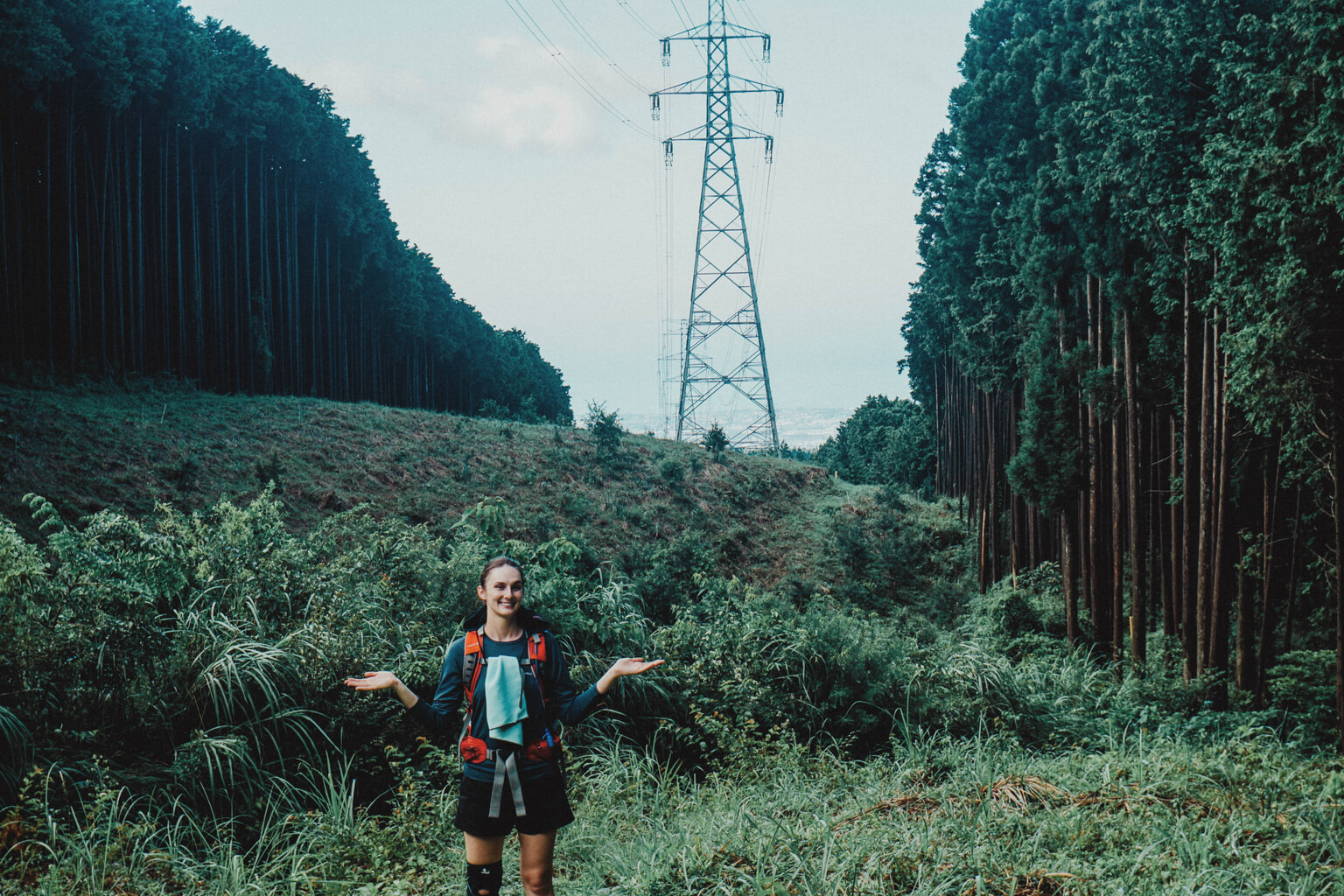
This lasted for several hours, until we finally got back on a real road. Luckily, we did cover good ground and we were only a few hundred meters away from a real well-marked trail that would take us up the rest of the way.
This previous stretch did cause some concern about our ability to finish our mission, but once we hit our next trail, it was smooth sailing again. We hiked for a few more hours, the air got cooler and the trees got shorter and spindlier. Finally, we broke above the tree line and it felt like we were really climbing Mount Fuji. A few hundred more meters and we made it to our destination.
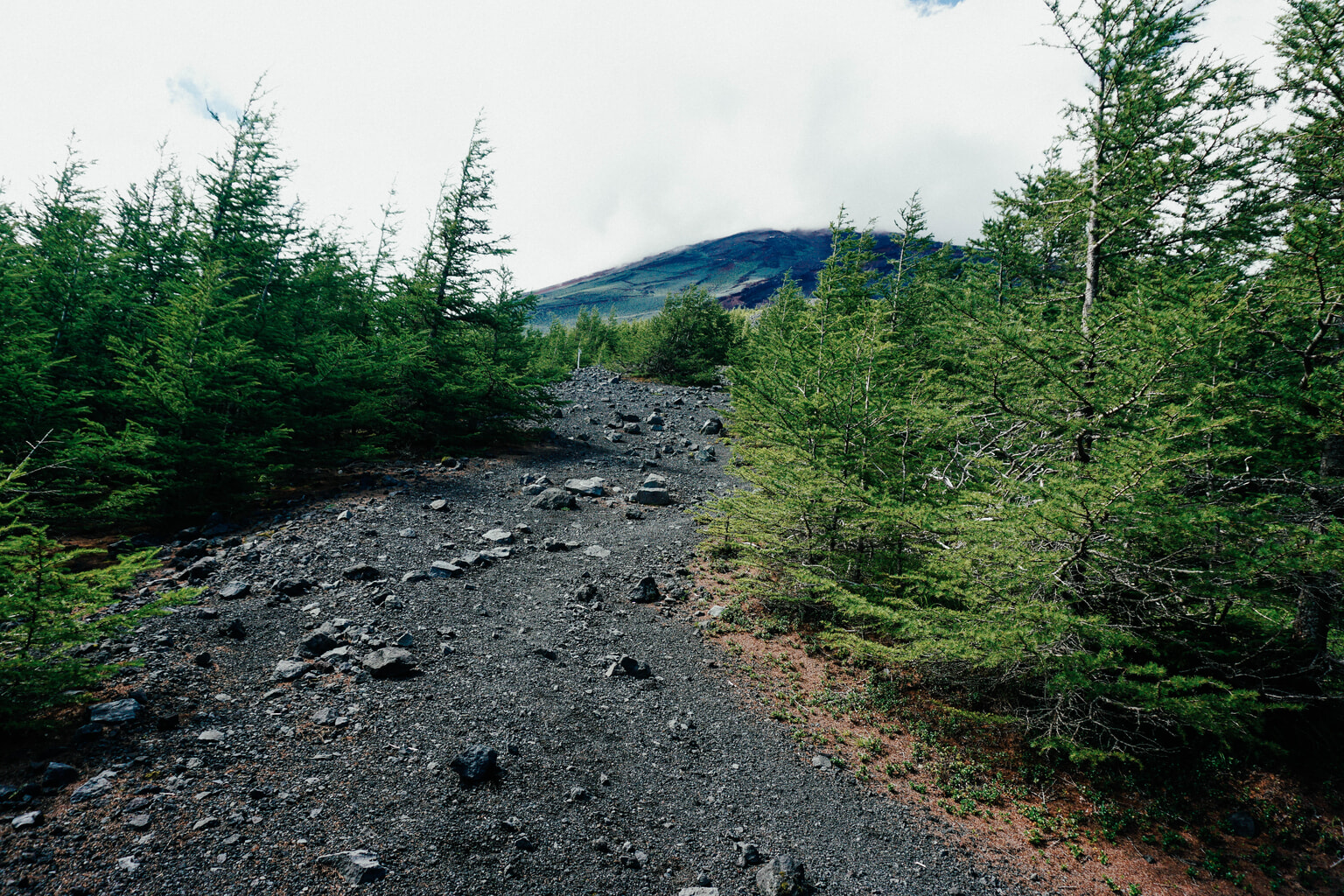
At the sixth station, where many begin their journeys, we were able to take our still-wet boots off and look back at the coast from where we started our climb. Under any other circumstance, our dinner that night of curry and rice would have been a subpar meal. But given our hunger and exhaustion, it tasted delicious. We scarfed it down, set our alarms for 1am and hit the hay.
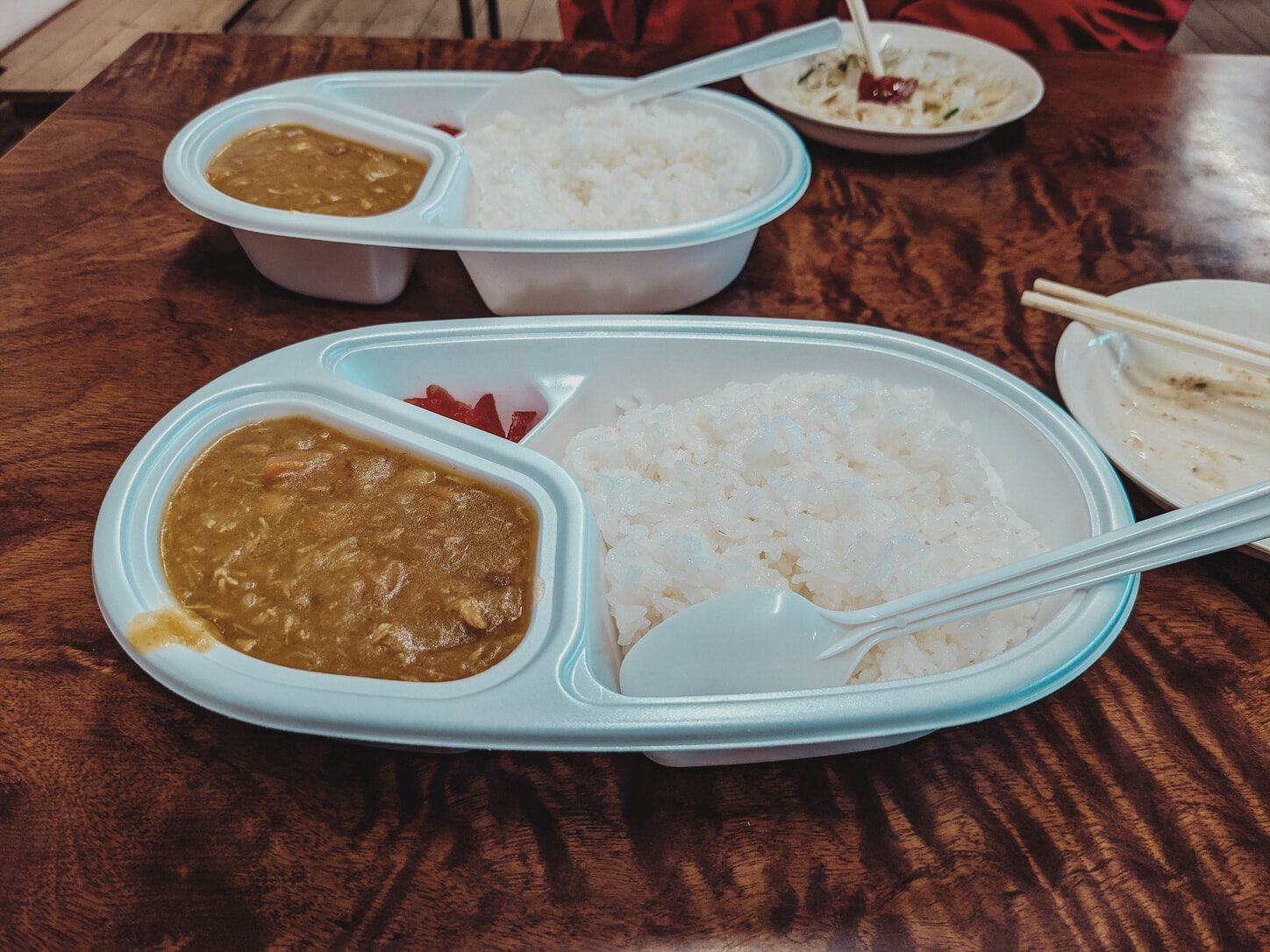
Day 3: Now it Feels We Are Really Climbing Mount Fuji
Day three began with us dressing in warmer clothes and donning our headlamps. It was windy and the temperature was around 10°C and dropped to just above freezing at the summit. The path from here is well marked with ropes and the climb wasn’t too difficult. If you’re careful about your footing and don’t rush, it’s manageable. The air got noticeably thinner, but the cool temperature helped us from feeling too exhausted. Hiking under a blanket of stars that slowly turned into a beautiful sunrise was encouraging.

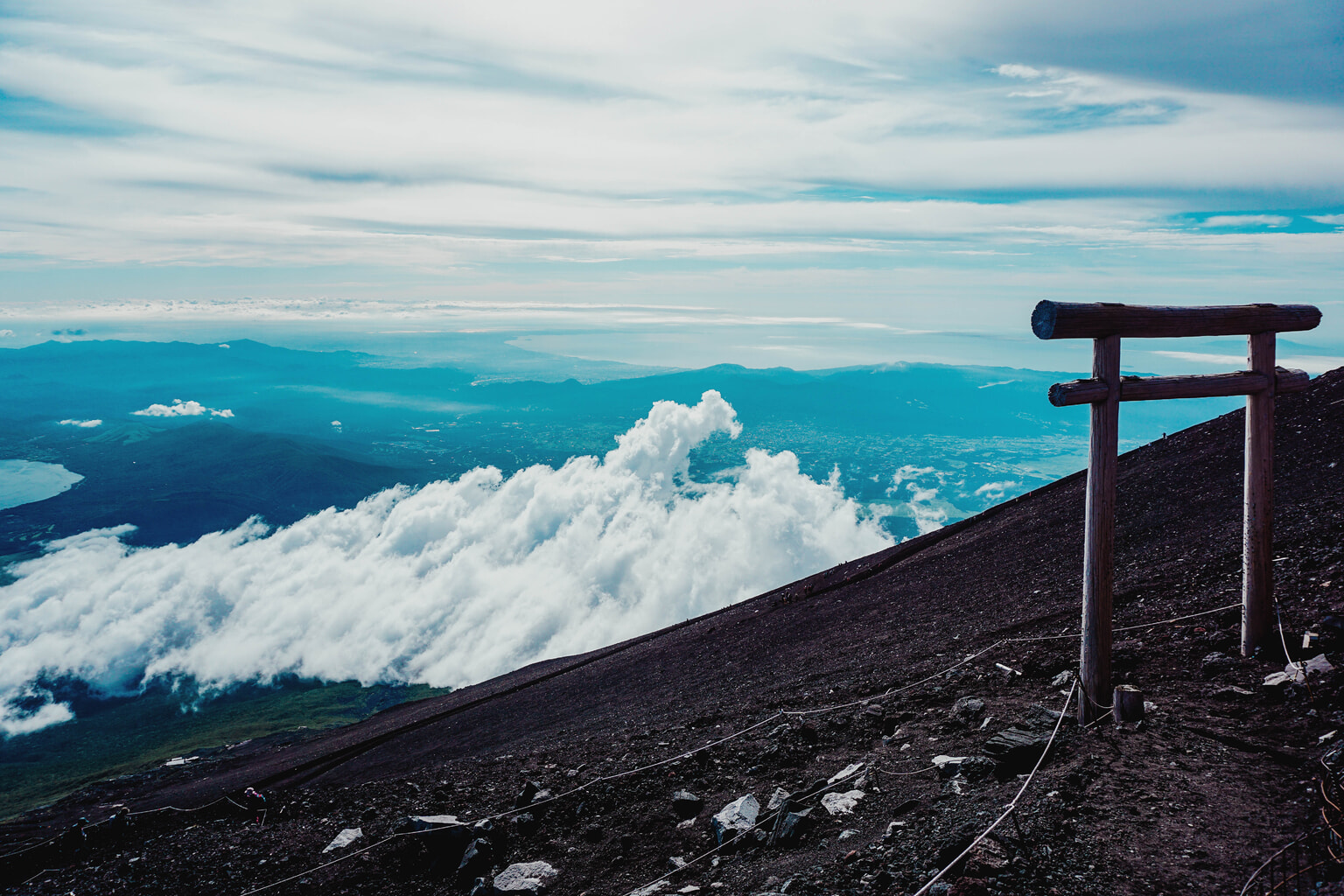
Once we got to the summit, it was pretty crowded, pretty cold and very rewarding. The view was indeed special, but we didn’t stick around long. We snapped some photos, dumped out our seawater and marched around the crater to the opposite side where we made our descent.
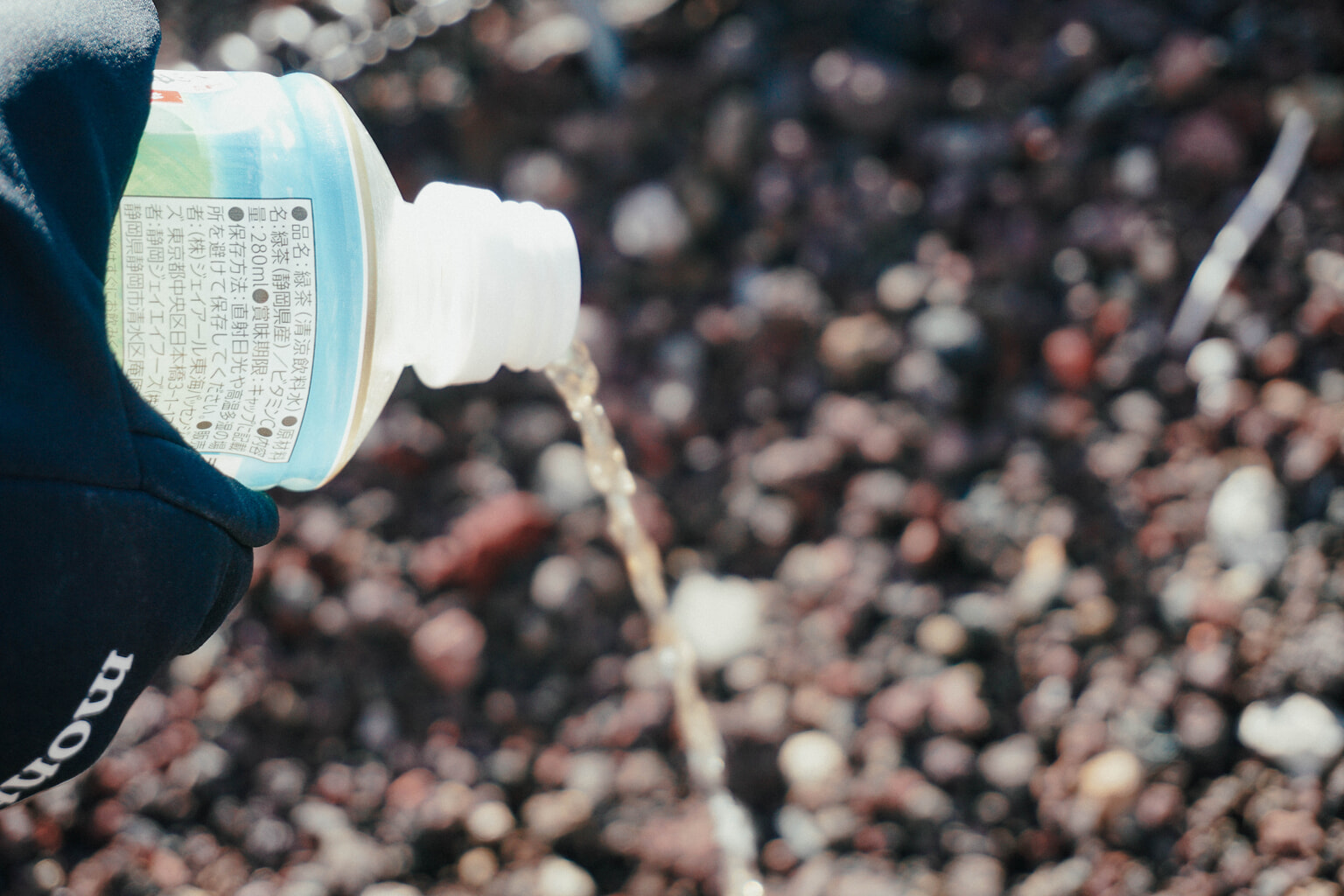
Finally brought the sea to the top of the tallest mountain in Japan
The Descent Back into Civilization
The descent was, in a word, boring. The loose red soil path snaked down the mountain in switchback after switchback. The grade was just steep enough where you had to be careful to not slip, but not steep enough to make any real ground.
After a few hours of switchbacks, we got back to roads, cars and civilization. We were at the fifth stop on the Yoshida Trail side, but we were still a long way from our hotel near Lake Kawaguchiko. We continued down the Yoshida Trail, which was now very well maintained and meandered through a beautiful forest and past the now derelict fourth, third, second and first stations. This journey felt incredibly long and we were getting tired.
After about four hours on this trail, we came across the starting point, which thankfully had a small teahouse. We sat outside in some lawn chairs and chatted about our journey with the men who ran it.
The final stretch was on pavement again and our feet could barely take it. Luckily, it was only a few kilometers and we eventually arrived at our hotel. Unfortunately, due to Covid-19 restrictions, the onsen and restaurant were closed. The nearest working restaurant was a few kilometers away, so we ordered food. It would have been nice to celebrate with something more special than Gusto, but we were happy to eat a hot meal. And it felt amazing just to shower and sleep.
Was It Worth It?
The next day we slept in and reflected on our journey. It was incredibly fun, exciting and rewarding. But it was also the kind of thing you only want to do once. If I did again for some reason, I would certainly follow a more well-marked route. And I would try my best to avoid typhoons. But at the end of the day, those are the parts of the story that were most memorable.
If you are interested in climbing Mount Fuji, I suggest not following my path and taking a look at the official route planned by the city of Fuji instead.
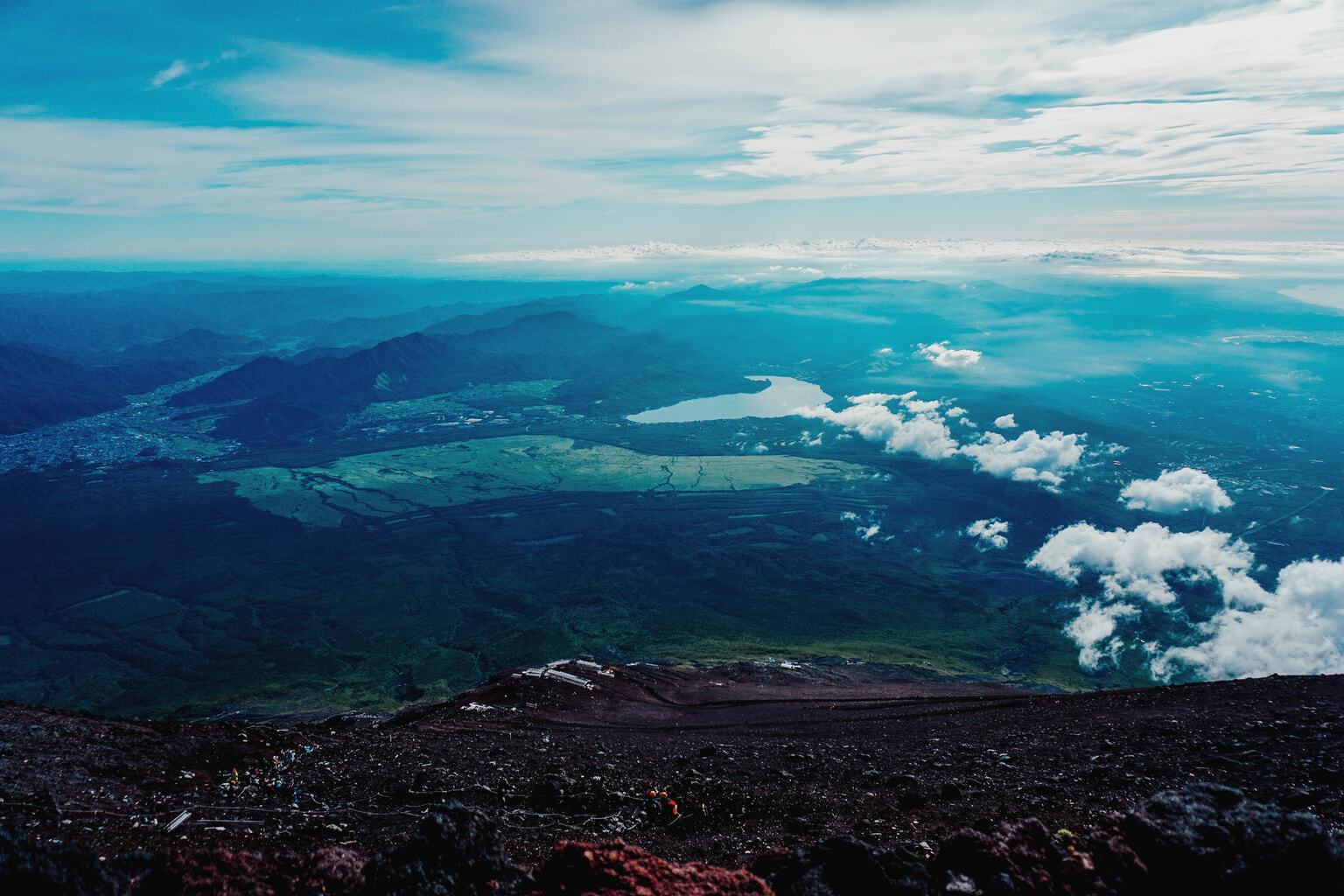
View of Fuji 5 lakes
Learn more about Japan’s beloved holy mountain:

